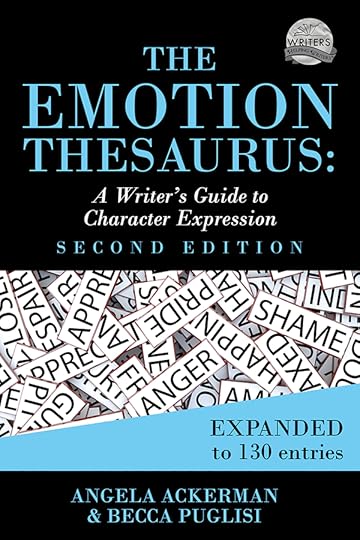Using the 5 Elements of Writing to Immerse Readers

Have you ever watched a movie based on a book you read and realized the book is so much better? As a writer, this phenomenon excites me, because we can create an experience for readers with words that studios are desperate to replicate with their huge budgets. But how can that be? Will books become obsolete as more and more content streams into homes? I highly doubt it. Writers have a few tricks up their sleeves that movies can���t use. And if you combine these elements on your pages, you���ll create an immersive experience that all the money in the world can���t put on the screen.
Movies rely on 3 elements of writing in their scripts to tell their stories ��� Setting, Dialogue, and Actions.
They can also use music, lighting, and special effects to enhance the whole experience.
Writers have 2 extra elements at their disposal ��� Reactions, and Inner Thoughts.
(Strictly speaking, movies can try to replicate Inner Thoughts by using an actor���s voiceover, but that gets annoying quickly if overused ��� advantage, writers!)
That���s right, only in books can a reader climb into a character���s skin and experience their world through their eyes. This is why books aren���t going anywhere, and why many times, the book is better than the movie!
The 5 Elements of Writing Include
Element 1: Setting ��� Your world is alive in your head as you write. Make sure that you���re giving your reader some hints along the way to help them construct your beautiful world in their minds. Try sprinkling 2-3 details of your world by letting your characters interact with your setting at the top of each scene, or immediately after the characters arrive at a new destination within a scene to make your setting pop.
Element 2: Dialogue ��� Just like a movie director, you as the writer can decide when to zoom way out and let time pass quickly for your characters, sharing only summary details like a movie montage, or zoom right in close and hear everything that they have to say. Dialogue is a great tool to include when you���re zooming in, letting us hear the actual words that characters say to one another. Dialogue in books is trickier to punctuate than you think, and many writers get this wrong, consistently. Check out my dialogue punctuation cheat sheet that should clear up any questions you have and get you punctuating dialogue like a pro, once and for all.
Element 3: Actions ��� This element includes describing all the stuff that characters get up to in your book. These actions can be small, such as scratching a nose during a conversation, or huge, such as jumping in front of a moving train to save their nemesis and furthering your plot.

Element 4: Reactions ��� When done right, sharing how a character reacts or feels in their Point of View will have your reader laughing, crying, or sitting on the edge of their seat right along with your characters! The Emotion Thesaurus is an amazing resource to get your creative juices flowing and practice how to get these emotions and reactions on your page.
Element 5: Inner Thoughts ��� This one is the slam dunk element that will tip your readers over the edge, falling into your pages. Whether you have a narrator, or it���s written from a character���s Point of View (POV), they are your reader���s guide on the journey, and will let the reader know how to feel and react to the story as they go. Let this inner voice of your POV character(s) shine, giving meaning to the events that unfold in your book���s plot. This element is what gives your story personality, helping it stand out from the rest, so have fun with it.
What if the 5 Elements of Writing aren���t Balanced on Your Pages?��Have you ever read (or written!) a scene that feels a little flat, and you just can���t seem to put your finger on why? Chances are, the writer has leaned too heavily on 1-2 of these elements of writing for a page or more, without taking full advantage of the full range at their disposal. Reading passages like this feels more like a chore, and readers will disengage.
Some examples of the elements being out of balance are:
Including long paragraphs of setting description clumped together without anything happening in the scene. Readers can only digest so much information at once, and if you include too much (commonly referred to as an info dump), readers will start to skim to get back to the action on the page, missing all your beautiful descriptions.A page or more of quick back and forth dialogue, with minimal actions inserted between what each character is saying. This is a problem commonly called talking heads , where it feels like your characters are just heads blabbing back and forth, not providing any context. You can have quick exchanges, but keep these short and to the point for maximum impact.Long tirades in a character���s head (Inner Thoughts), while not moving the story forward. This one feels a lot like an info dump to read.Scenes that go from action to action, meticulously detailing the things your characters do, without giving them time to React, or reflect on what it means to them in that moment using Inner Thoughts.The good news is, this imbalance is easy to spot when reading your own drafts, and easy to fix. In addition to simply counting the number of elements you���ve used on each page using the list in this article, you can spot areas in your draft that need attention quickly, paying attention to the white space on the page.
A long section relying heavily on quick dialogue is easy to spot when there is lots of white space on your page.Too much setting description or inner thoughts is easy to spot when the text is dense on your pages, with long paragraphs and few breaksHaving awareness of the 5 Elements of Writing in your writers��� toolbelt will help you craft pages that hold your reader���s attention, making it feel three dimensional. Using 3 or more of these Elements on each page will keep your reader���s brain engaged and make your scenes feel richer and fuller, even better than the movie will be when it comes out.
The post Using the 5 Elements of Writing to Immerse Readers appeared first on WRITERS HELPING WRITERS��.
Writers Helping Writers
- Angela Ackerman's profile
- 1022 followers



